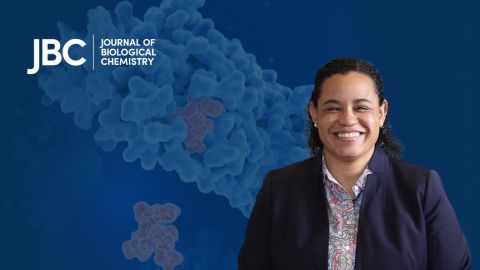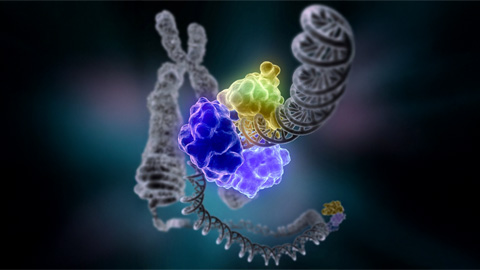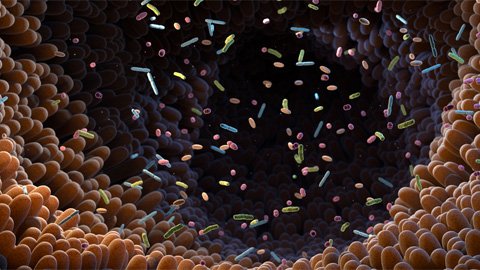Unraveling oncogenesis: What makes cancer tick?
Recent discoveries in cancer biology may bring forward an additional collection of tools in physicians’ arsenal of cancer therapeutics. Scientists now know that many cancer-associated mutations affect chromatin regulation and the function of multiprotein transcriptional complexes, which can ultimately lead to cancer development and growth. This knowledge may be used to develop future clinical approaches.

The ASBMB annual meeting is around the corner, and attendees can expect a wide variety of symposia offerings throughout the event. One of the symposia, oncogenic hubs: chromatin regulatory and transcriptional complexes in cancer, will focus on the role of transcriptional dysregulation, histone modification and chromatin regulatory complexes in cancer formation. Cigall Kadoch of Harvard Medical School and Greg Wang of Duke University School of Medicine organized and will lead the session.
Wang, a current Journal of Biological Chemistry editorial board member and 2022 ASBMB Young Investigator Award recipient, said the symposium will focus on cancer but encouraged attendees from all fields to participate in the session.
“These topics can be applied to many other diseases as well,” Wang said.
According to Kadoch, the topics covered at the symposium directly relate to patient care and developing novel therapeutic approaches.
“We’re at a unique moment in time in which the learnings from first-in-class approaches in the clinic are coming back to the bench to inform new questions and propel next-step advances,” Kadoch said. “(We) hope this section of the ASBMB meeting does a good job of covering that.”
Wang added: “(This field) elevates basic science to the translational level to ultimately benefit patients.”
Kadoch and Wang selected a diverse array of speakers who study the role of molecular condensates, extrachromosomal DNA, chromatin regulatory machinery, epigenetics and more in cancer.
“I am particularly excited about the interplay of the speakers within the section and the opportunity for our audiences to take away numerous new approaches to exploring some of the most pressing biological questions relating to oncogenic hubs,” Kadoch said.
Check out the full program schedule to get the most out of #ASBMB25.
Enjoy reading ASBMB Today?
Become a member to receive the print edition four times a year and the digital edition monthly.
Learn moreFeatured jobs
from the ASBMB career center
Get the latest from ASBMB Today
Enter your email address, and we’ll send you a weekly email with recent articles, interviews and more.
Latest in Science
Science highlights or most popular articles

Meet Donita Brady
Donita Brady is an associate professor of cancer biology and an associate editor of the Journal of Biological Chemistry, who studies metalloallostery in cancer.

Glyco get-together exploring health and disease
Meet the co-chairs of the 2025 ASBMB meeting on O-GlcNAcylation to be held July 10–13, 2025, in Durham, North Carolina. Learn about the latest in the field and meet families affected by diseases associated with this pathway.

Targeting toxins to treat whooping cough
Scientists find that liver protein inhibits of pertussis toxin, offering a potential new treatment for bacterial respiratory disease. Read more about this recent study from the Journal of Biological Chemistry.

Elusive zebrafish enzyme in lipid secretion
Scientists discover that triacylglycerol synthesis enzyme drives lipoproteins secretion rather than lipid droplet storage. Read more about this recent study from the Journal of Biological Chemistry.

Scientists identify pan-cancer biomarkers
Researchers analyze protein and RNA data across 13 cancer types to find similarities that could improve cancer staging, prognosis and treatment strategies. Read about this recent article published in Molecular & Cellular Proteomics.

New mass spectrometry tool accurately identifies bacteria
Scientists develop a software tool to categorize microbe species and antibiotic resistance markers to aid clinical and environmental research. Read about this recent article published in Molecular & Cellular Proteomics.

